#outside of the dialogue trees there are MANY VERY VALID REASONS to take issue with sera as a character
Explore tagged Tumblr posts
Note
You mentioned Sera, whats your take on her?
Honestly I can't say a huge amount because a) I haven't played Inquisition in A While and b) even before I stopped playing it I had stopped recruiting Sera (because she's Just The Worst), so. Just to be clear, I'm working off what I remember of her character, which may not be entirely accurate to what actually happened although I'm pretty sure it is.
That said, she's just... awful to Lavellan. Just horrible, all the fucking time. She insults their people, insults their culture, if they're a mage pretty much insults their entire existence (and the mage thing extends to Trevelyan and Adaar). She gets mad at Lavellan for refusing to abandon their beliefs having LITERALLY JUST SPOKEN TO ONE OF THEIR GODS because SHE thinks Mythal was actually a demon! I have a post somewhere about it, but if Lavellan points out that it doesn't actually matter what they believe because the Inquisition has made it clear that they'll insist on calling them "Andraste's Herald" even if they've outright denied it and come as close to saying "don't call me the herald of the religion that has persecuted my people for centuries and all but destroyed my culture" as the game will allow she disapproves of that because, again, they're not willing to convert to the religion using them as a glorified figurehead against their will! If a female Lavellan romancing her does this she will break up with her! And you'll notice that I only mention Lavellan; she will not break up with any other Inquisitor if they suggest Mythal might have been real. Oh, she'll still disapprove, but it's only an offence worthy of breaking off their relationship if her girlfriend actually worships Mythal. In other words, her girlfriend being Dalish and holding to the Dalish faith after being given empirical evidence that her gods exist in at least some form is worth breaking up with her over. Because she can't prove Mythal wasn't a demon and that makes choosing to believe in her a huge problem. In a game that is largely about faith. And of course there's the whole "elves and mages aren't little people" thing when they're literally the bottom rank of all of human society that we see (and certainly in Ferelden, which is where Sera grew up, and Orlais, where we meet her); you don't get more little than that! Also (speaking of relationships) from what people have said she comes across as outright objectifying towards a female Cadash or Adaar Inquisitor, but having never played either of them with her in the Inquisition I can't say whether or not that's true.
And she just will not take anything seriously! If memory serves she wants to play pranks in Halamshiral during a very important diplomatic event that the Inquisition CANNOT RISK BEING KICKED OUT OF FOR FEAR OF CORYPHEUS WINNING! She will murder a man to assuage her own feelings without considering the impact that could have on the organization trying to prevent the end of the world that she is ostensibly part of (a man who if memory serves is useful to the Inquisition if you make the right choices) because he's a bad person and she thinks she has the right to be judge, jury and executioner without so much as asking anyone else including the person whose orders she's SUPPOSED TO BE FOLLOWING (because murdering a noble won't piss off the Orlesians at all...)! The fate of the world is at stake and she's just dicking around, playing pranks on the people in charge of keeping it together! And some of her pranks are downright cruel, or even dangerous! Like, dumping a bucket of water on Josephine and humiliating her in front of her people so that they'll laugh at her is just uncalled for, especially given there's as far as I recall nothing to suggest Josie is anything but good to those serving under her; hey, maybe her people don't want to laugh at her! And if memory serves her "prank" against Vivienne involves putting a venomous snake in her underwear drawer! Vivienne turns it around because Vivienne's badass, but that could have killed her! What the fuck is wrong with Sera that she thinks putting someone's life in danger is funny?! I don't think she even offers any assistance that we see outside of her own presence even though the Red Jennies should logically be useful!
And you know the worst part? You can never call her out on any of this. From what I remember the closest you get is the option for some ableist insults that in no way even begin to cover any of the actual issues an Inquisitor would logically have with her, and from what I understand even if you kick her out you don't get to tell her "Your refusal to take this seriously is putting us and the world at risk and I cannot allow that" or "I cannot and will not work with someone who refuses to so much as not openly insult my culture and religion" (at least Solas, bad as he can be, will apologize and reconsider his stance if your approval gets high enough and has understandable reasons for responding the way he does) or "You have made it clear that you think my magic makes me at best less of a person and at worst a monster and I will not tolerate that any longer"! Basically Sera is horrible to the Inquisitor if they're an elf or a mage and Bioware said "What's a reasonable response to this when we give the player an opportunity to react negatively? Ableism? Yeah, let's go with ableism" and it pisses me off.
#dragon age inquisition#it's especially annoying because i've seen some blogs bring any argument against sera down to just ableism and like. no#BIOWARE brings any IN-GAME argument against sera down to just ableism#outside of the dialogue trees there are MANY VERY VALID REASONS to take issue with sera as a character
10 notes
·
View notes
Note
can i ask about amarant coral? the monk in red himself~
Can you ask about Amarant Coral? *cracks fingers* Oh I insist that you do. Welcome to my Amarant Appreciation Post:
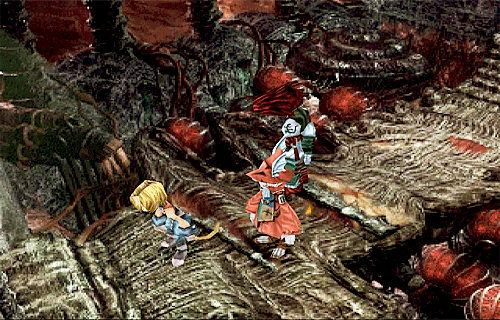
favorite thing about them: First off best thing about Amarant? His theme. The percussion and the guitar. It’s great and it captures him so well. People out here like “take Amarant out of the game he adds nothing.” EXCUSE ME? You remove the Amarant you remove the Amarant Theme my friend and that is something I do NOT vibe with.
least favorite thing about them: I wanna know more about him. Now Amarant doesn’t need a backstory or history in the game. In a sense, he already has one that connects him to Zidane and explains his motives and actions and eventual arc. But my issue is, Square never gave him anything else. If you look at Ultimania there’s additional lore about other characters, like Steiner for instance. You learn Steiner was a war orphan who was saved by the Pluto Knights - explaining his devotion to them. Amarant though? Square was like “uh... yeah he was born....? And then he uh got famous...? Idk then he met Zidane. You figure it out.” Square. I hate you. 18 years from his birth until he became “well known”. WHAT WAS HE DOING. WHY’D HE BECOME A SECURITY GUARD. WHAT WAS ON HIS RESUME. TELL MEEEE. Like, okay, what the actual in-game canon gives us on Amarant is sort of enough. He’s a purposely written mysterious “cool-guy” character so we’re given scraps to make him unknown but come on. In the published after-game canon, like Ultimania, we could have been given a bit more. He says he doesn’t remember anything about his origins or parents, but why. Was he another victim of Gaia’s wars? Probably. Was he born on a battlefield? Fighting for his life, living without comrades, taking scraps whenever he could? Was he betrayed when he was young? Is he a supposed to be a version of Zidane had he not been adopted into Tantalus by Baku??? These are questions I deserve answers to, Square.
favorite line: “’I can't just walk away. It goes against my nature...’ You're a real simpleton. Forget it, guys. There's no stopping this fool." I love this. Amarant figures Zidane out pretty quickly after Ipsen’s Castle. Zidane is hardheaded and also an actor. He acts cool and pretends his reasons for doing things are loose but when he’s decided something it’s always for a reason. You don’t need a reason to help people, but Zidane has his reasons for helping Kuja and while Amarant doesn’t give two shits what they are he knows Zidane won’t be stopped because, despite everything, Zidane saved a loser like him. Also this line “Tell me! Why didn't you kill me!?" Because I quote it all the time and it makes myself laugh. Amarant is such a drama queen and Zidane knows it. Zidane’s like “dude... what is your damage, it’s 5 pm on Tuesday in Madain Sari. I ain’t getting blood on my gloves cause you’re having a temper tantrum.” And then Amarant runs away to have an existential crisis. He’s 26 but compared to Zidane, he’s the real teenager with angst.
brOTP: I could talk about Zidane or Freya with Amarant but instead I’m gonna say the underrated dynamic of Amarant and Eiko (and also Vivi). Amarant with the kids is truly the greatest gift given by his presence in the game. Amarant has never known true suffering until he became a designated legal guardian of a group of minors. It also kills me how he’s the one to volunteer to carry Eiko and Vivi up the Iifa tree. He looks at Zidane and is like “you have seriously been the ‘adult’ of this group???”
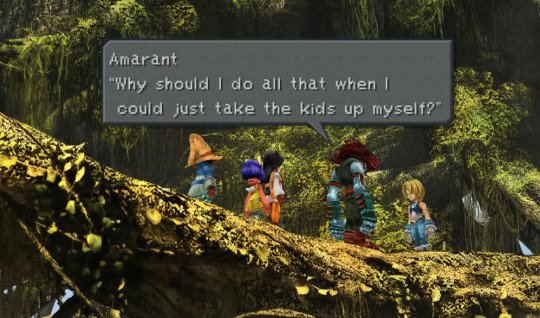

OTP: Gotta say the Freya and Amarant dynamic. I really enjoyed their unlikely friendship in the game but then the content. The fan content. The Freya x Amarant fans out there, you win. Ya got me. You captured me and I am now imprisoned by their banter and begruntled allies to lovers story. Even if they’re not romantic I love them together and really wish the game gave us more of them. But even Lani and Amarant together are valid, though I prefer them as butting head bros. Not much content for my girl Lani out there either, she deserves more.
nOTP: Nothing I can think of. I tend to like platonic pairings for Amarant. The dude needs friends because he can barely define the word friendship.
random headcanon: Before Zidane returns at the end of the game Amarant wanders around a bit, unsure of what to do. He doesn’t feel any place with the others in Alexandria, Burmecia, or Lindblum. I imagine he goes off on his own for a bit like before but this time he’s not after Zidane or a fight. Instead he’s got no particular destination. Yet he somehow always finds himself running into people just like him - or the old him - friendless lonely people who are looking for a fight. He doesn’t go out his way to find these folks he simply runs into them and decides he might as well knock some sense into them. He does however make it his business to go after any murmur of people hatching any ideas of going after the far off little village on the Lost Continent. The home of the genomes and black mages. They were so helpless, so weak that anyone who’d want to mess with them is pathetic in Amarant’s book. Until Zidane returns, no one has the chance to even look at the Black Mage Village the wrong way because in the shadows Amarant lurks, making damn well sure of that.
unpopular opinion: I kinda love that he’s just there for most of the game? While I agree he gets the short end of the stick in the same way as Freya, not receiving additional individual character spotlight (which could have very well been supplied through discoverable lore in the world/npcs or through sidequests) I never considered his “standing off to the side” as a detriment to his character.
Many would probably agree that Amarant always felt like a bit of a parody of the loner character, or at least the stereotype of the loner character. Amarant is so easily paralleled with Squall and Cloud’s surface-level attitudes because his dialogue always felt like something to poke fun at. As the player we’re supposed to align with Zidane’s way of thinking and how he views Amarant. When Amarant loses to Zidane and pretty much grits his teeth and goes “KILL ME,” along with Zidane we’re supposed to kinda raise our brow at him and go “...really, dude?”
Amarant’s a character introduced as an antagonist who has more in common with the power hungry villains of the game. Like many of the characters in FFIX, Amarant is in search of purpose in life, which he has never found, because he was always looking in the wrong places - in places of violence and power. Very toxic-masculinity of him. Amarant is “cool” on an aesthetic level but in reality he’s the polar opposite of cool in terms of what FFIX states about the need for others to be intertwined in your experiences so that you can live a full life.
I sort of love that he’s like a grumpy pitball following a 16 year old and his friends around. Then he sits in the corner when they all meet up and discuss current events acting like he doesn’t care (not to mention he casually walks as everyone is running as fast as they can to escape Terra - made me laugh cry on my first playthrough) He is “just there” but that’s because he has no where else to be, no where else to go, he’s a man without a home. And until Zidane offers his hand, at the point where Amarant is most willing to take it at Ipsen’s Castle, he’s not truly a party member. He IS an outsider for almost the entire game but at Ipsen Castle he joins the party, becomes a comrade, and decides he’ll allow himself to change paths and start a life where he has friends and lives, as well as fights for them. Which is why after that moment, Amarant finally has a victory pose.
song i associate with them: I was scratching my head for so long trying to think of a song or track that had Amarant vibes until it hit me. Outskirt Stand by Tsukasa Tawada (from Pokemon Colosseum). Amarant is so chill, he’s not a bombastic guy, so he needs a theme that drops me in the rocky open desert of the Lost Continent like I’m just lumbering around looking for a monkey-tailed menace. Some other Amarant tunes: Pyrite Town, The Under, Snagem Hideout tracks from Pokemon Colosseum. This post is just an elaborate call to action for everyone to listen to the Pokemon Colosseum soundtrack. Tsukasa Tawada is so great and he has a YouTube. Check him out.
favorite picture of them:
Yoshitaka Amano’s Salamander Coral. I love him. He had too much power.
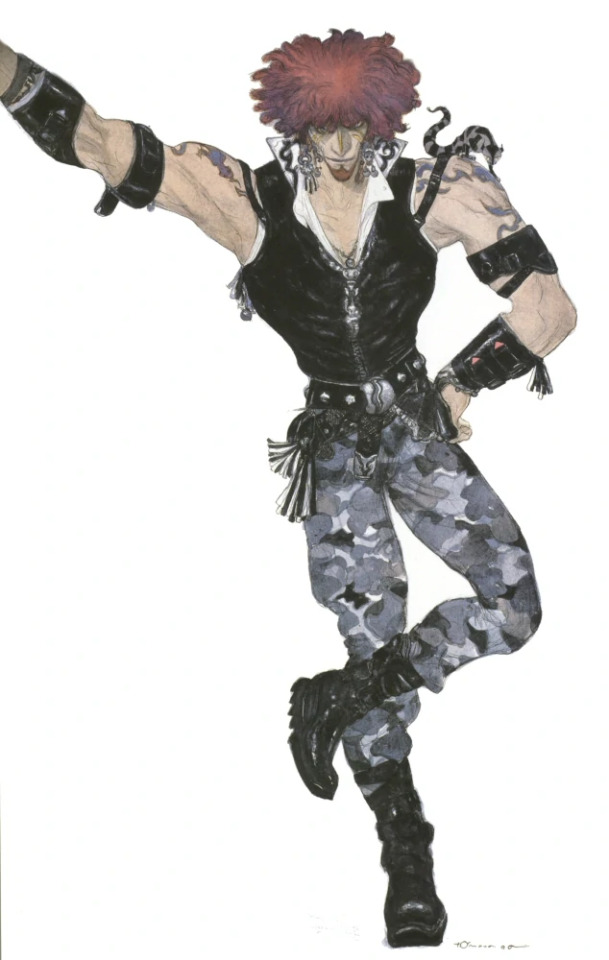
Also everything drawn by @crispy-ghee. Everything. I will think of this Comic forever until I die. Tattoo it on my flesh. The banter, the dynamics, the post-game content, the Zidane prince-consort outfit, the new Amarant outfit, the stuck-in-the-same-place relationship him and Freya have. Perfect. Go read it and consume Crisipy’s stuff. And also check them and their current art out, they just consistently get better and better. Here’s a first panel preview of my fav comic. Read it.

@hannahlady‘s Amarant art and their Freya/Amarant art is just ugh. *Chef’s Kiss* Here is another preview because you should go look at it.

Here’s a piece that deserves so much more love by @snackage. I LOVE how they drew Amarant. Here’s a little preview. It’s SO GOOD
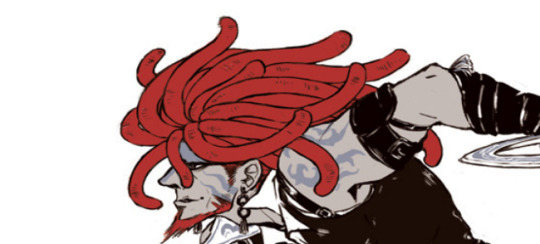
Anyway TL;DR: Amarant is love and life and you’ll have to pull him from my little gremlin hands.
#asks#scriberat#amarant coral#ffix#final fantasy ix#amarant#final fantasy 9#freya#amarant x freya#lani#zidane tribal#eiko carol
47 notes
·
View notes
Text
Tangled Salt Marathon - Rapunzel and the Great Tree Part 1
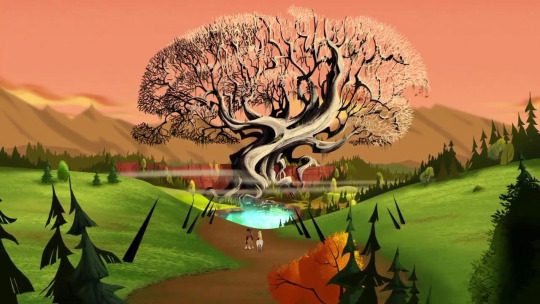
We’re now finally at the mid-season finale of season two, and it’s easily the best episode of this season. That however doesn’t mean that it’s not flawed, so here we go...
Summary: The group makes it to the Great Tree, only to be confronted by a new adversary: Hector, the brother of Adira, the most dangerous member of the Brotherhood; sworn to keep all from reaching the Dark Kingdom. Despite all that has happened, Rapunzel is determined to continue on toward the Dark Kingdom to uncover the truth behind her destiny. As they navigate through the Great Tree, Rapunzel discovers the Moonstone incantation which overwhelms the magical powers of the Sundrop in her blonde hair and causes injury and weakness to those around her.
The Brotherhood Is Such a Wasted Concept

We have a group of highly trained warriors, directly connected to the series main macguffin, who consider each other siblings, who all have conflicting goals, and they’re all severely underdeveloped to the point of ridiculousness.
For starters, in a show all about pushing sibling rivalries as parallels to the two main characters, it utterly fails to show the only other siblings who are actually connected to the plot acting like actual siblings.
Adira and Hector should be a parallel to Cass and Rapunzel in this very episode. One that actually ties into the narrative, yet outside of calling each other brother/sister/brethren they don’t act like family; even feuding family. Adira also fails to treat Quirin, Varian, Edmund, and Eugene as family. She shows no real concern for any of them despite saving her home (which would included her family) from the rocks being her main goal. She should be just as every bit as invested in saving Quirin as Varian. Which is yet another reason why Varian should have been S2 and another entry point for him in the show’s plot.
As for the rest of the Brotherhood, they never even interact at all. I don’t think anyone tells either Edmund or Hector what has happened to Quirin or Varian. And Edmund clearly didn’t inform Hector of Eugene, even though he logically should have. And did any of them know if Edmund was alive, despite Edmund having the means to communicate with the outside world with the crows?
What we’re left with is a bunch of holes in the story, because there’s now a bunch of holes in everyone’s motivations and their actions never quite line up.
And before you say, ‘well they’re not that important’, or ‘they’re aren’t meant to be a real family’; then that is in of itself a flaw because they should be. Not making them found family undermines Raps and Cass being found family, as it undermines every other sibling parallel in the show, and those parallels are the only build up we have to the sister reveal in S3.
It also undermines the moonstone plot and the whole reason why season two exists. Don't introduce things that connect back to your story and not make them important. In fact don't introduce unimportant elements in a plot driven show like this period.
Another Indication of the Timeline
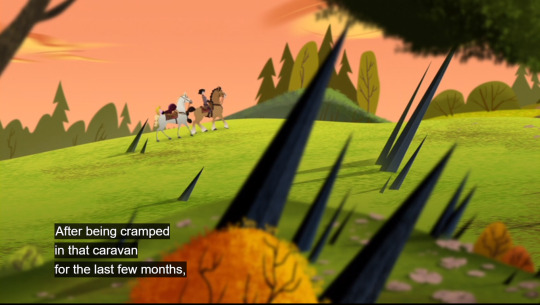
As stated before, Tangled is really bad at indicating the passage of time, despite the passage of time being a big plot point. We’re now a ‘few months’ past the island, which itself was 6 weeks, and before that it was several weeks to maybe even a few months before getting to the island...
So when does this take place? Well we were told that season two takes place over the course of a year by the creator, and that this is the mid-season finale so 6 months since SotSD sounds the most plausible. We also see fall trees dotted around like we did during the first half of season one. Which is the only visual indicator we get of changing seasons in the show, but it’s too understated to be properly noticeable most of the time.
However, the crew themselves can’t even seem to agree if Rapunzel’s Return is her birthday or not, so if you’ve heard conflicting sources, it’s because this shit wasn’t planned properly first. But all dialogue and visual cues point to the first half of season two being at least 4 to 6 months. With 6 being the most logical placement.
Just a Reminder, that Hook Foot Is Still Useless

If all you were going to have him do is whine like a child during the only plot important episode that he is in, then why not just replace him with an actual child?
It takes more work to leave Varian out of season two and force Hook Foot in his place, than it does just to write Varian in. There were so many potential entry points for his character, that the one they would up going with was the least natural to the characters and the story they were trying to tell. And even then, the Saporian take over they went with could still have worked had they handled things properly and pre-planned that stuff out.
But they didn’t. By all accounts S2 was a hasty re-write to get rid of Varian and Hook Foot was shoehorned in as his replacement at the last minute. And it’s the most utterly baffling creative decision I have ever witnessed in my life. There was zero logical reason for it.
This Plot Point Wasn’t Built Up Enough and It Goes Nowhere

Look, had they actually pointed out that Cass is a bodyguard now, and that this line from Raps threatens her career goals, that would make sense; or they could have explored the idea that Cass’s identity revolves around her job, and so feeling like her job is pointless makes her feel pointless therefore making her feel insecure about her future. Either of those would have been interesting jumping off points for her character arc and later conflicts.
But that’s not what they did.
I think that’s what they were initially trying to go for here, but it got muddled in the mess that was last minute rewrites.
Cass obtaining her goals in season one is ignored in favor of a bland and vague validation goal from this point onwards. Her issues with Rapunzel are then boiled down to be about; not identity, agency, class, or wanting a future, but into fighting over a dead mom and how one wasn’t ‘loved enough’ apparently. Which makes no sense given what we know of Cass from previous seasons.
Cassandra isn’t deep or complex; she is convoluted. The writing team couldn’t agree on what her goals and motivations should be, and so she performs conflicting actions throughout the story that actively undermines what was previously established and what she supposedly wants.
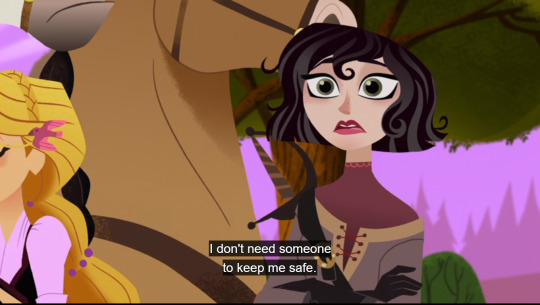
Most people who try to defend the writing for Cassandra do so with this idea that because they had to work hard to ‘connect the dots’ for all these seemingly disconnected plot ideas, means that of course the writing is ‘deep’ but that’s ignoring one of the basic fundamentals of writing.
The audience shouldn’t have to do the writer’s job!
Having to think about a story doesn’t mean that you need to go digging around for basic information like the character’s goals or what happened when. A writer’s job is to first and foremost clearly communicate ideas to their audience. Plot and character analysis is about finding extras like, metaphors, moral messages, and coming up with fun headcanons that don't impact the wider story. Because all of the bare bones information needed to understand the story should already be there for everyone to see.
If you gotta go into ‘analysis’ just explain the damn plot and why things are unfolding the way they do, then the story is badly written. Full stop.
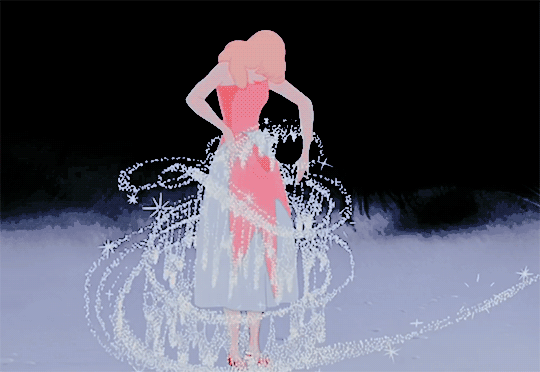
Cinderella wanting to go to the ball is a simple goal, but it’s an understandable one that anyone watching can grasp. You could go into a deeper analysis about abuse and what the ball symbolises for Cinderella’s character or how the story is an analogy for wider social issues at large, but at the end of the day everyone needs to be in agreement that, yes, Cinderella wants to go to the ball and we know why she wants to go, so that her actions in trying to get there make sense.
No one knows what Cassandra wants. Cassandra herself doesn’t know what she wants. So the ‘why’ part for what she does is never answered.
Hector Is Wasted
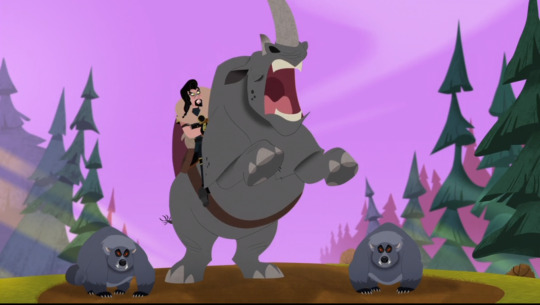
As already stated, all of the Brotherhood is wasted, but Hector more so than most. Season two desperately needed an ongoing threat, a main antagonist to push the story forward. Hector should have been that antagonist. Instead he shows up for this one episode, and then in a few non-speaking cameos in S3.
Then Why Not Just Stay With Them Adira?
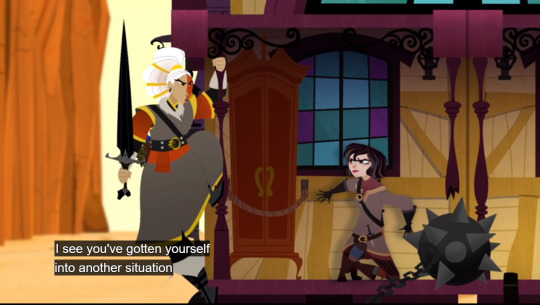
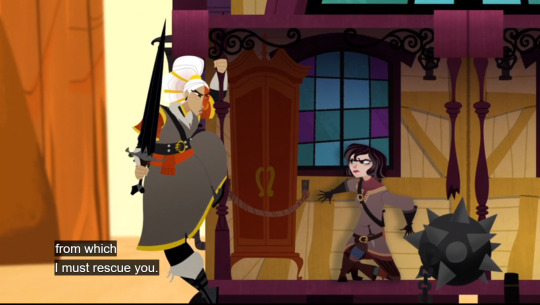
We’re never given an actual reason for why Adira keeps leaving the group, and indeed doing so conflicts with her stated goal of getting Rapunzel safely to the moonstone. It’s just shoehorned in here to create ‘mystery’, but mysteries have to be answered at some point. You can’t throw something in for drama’s sake and not explain why it’s there.
Lance’s Crush on Adira Isn’t Handled Well



Look, this isn’t a judgment upon those who ship the characters. When I talk about relationships in the show I’m only talking about how well they are written on screen. I couldn’t care less what the fans do with them.
Even when I discuss my personal preferences for ships, that is all that is, my personal preference. I don't give a shit if you ship something that I may dislike, or if you hate something that I do enjoy. I’m a grown up with more important things to do than worry over what a bunch strangers may write on A03 about a bunch of fictional characters, and as someone who hates bullies above all else, I’ll defend your right to make whatever content to want to because censorship is just a form of bullying and nothing else.
No matter how gross or reprehensible I may personally find it. Different stories resonate with different people and for different reasons. I may debate your reasons, if the subject comes up, or critique professional media for the messages it puts out to the wider public, but I’ll never say you can’t like it or that you can’t make it.

So with that stated, I don’t like Lance’s dynamic with Adira in the show and here’s my reasons for that.
She doesn’t ever return the feelings.
At best she tolerates him, at worse she actively kicks his butt when he gets too close, and most of the time she ignores him. Which is for good reason; she’s old enough to be his mom. Why would she be attracted to him?
Like I’m not saying that age gaps between adults are inherently wrong; I’m saying that if there is a significant age gap then you really have to work hard to build up a reason for why the two characters would go for each other when naturally they wouldn’t be in each other’s usual sphere of dating options. Which the series never does because once again Adira is clearly not interested in him.
This leads to Lance basically being an annoying ‘nice guy’ who can’t take a hint. Like constantly badgering someone who doesn’t want you to isn’t charming or endearing, and Lance is old enough to know this by now.
Basically the writers just took the Varian and Cassandra dynamic from Great Expotations and slapped it onto Lance and Adira despite the fact that it made zero sense for their characters. Lance isn’t a lonely teen who desperately wants to fit in and make a connection with someone. He’s not out to prove that he is mature, nor mistakenly believes himself to be an equal to the only other girl in the kingdom that has ever talked to him that isn’t already married/seriously dating and still living at home. Adira never comes around to considering Lance a trusted friend and confidante after shoving nearly everyone else away. She doesn’t seek out his help or approval, nor tries to build him up with compliments, ect, and so forth.
Now, I dislike the Cass and Varian ship for many, many reasons, but as they are presented on screen in the Great Expo it makes sense for why Varian would at first have an unrequited crush on her. Now after that QfaD he logically shouldn’t ever want anything to do with her but we’ll get to that later. That’s not the case with Lance and Adira; they’re both too old for such a dynamic.
To add on to the weird factor, they’re both related to Eugene. Adira is technically Eugene’s aunt, even if she never acts like it. Lance is also the closest thing to a brother Eugene has. They don’t recognize each other as such, so if you want to say their just friends or ship them or whatever, there’s wiggle room. But the end effect is like Maya in Girl Meets World crushing on her best friend’s, Riley’s, Uncle Josh. Only even with less basis, and it wasn’t that great there either.
Why Do you Suddenly Not Trust Adira Cass?

Forest of No Return was all about establishing trust in Adira, including with Cass at the end, so why the sudden back track? Especially since Adira hasn’t done anything but been honest with them, and has saved their butts several times now. All this does is make Cassandra look like an ass, which you don't need to be doing if you want the audience to side with her later on in the story.
Everyone Now Knows Quirin is a Part of the Brotherhood, So There’s No Excuse For Later
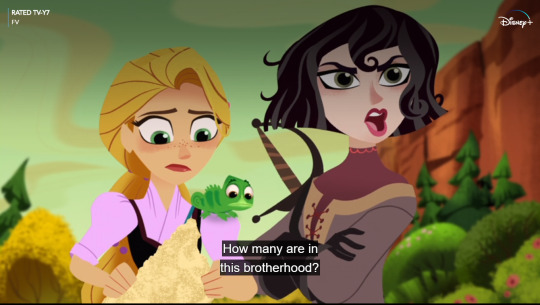
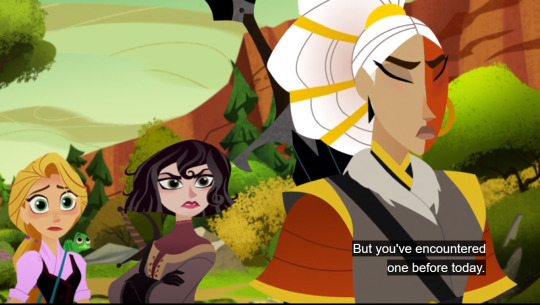
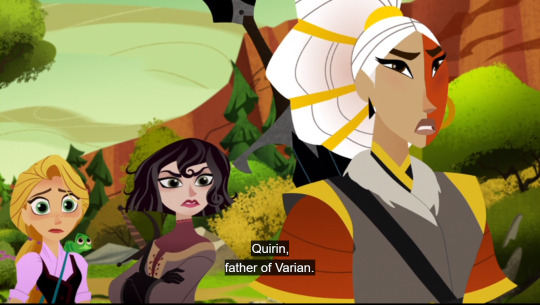
It’s an odd way to state that fact, but yeah, both Cass and Raps are told directly that Quirin is in the Brotherhood, and Lance, Eugene, and Hookfoot are also present and presumably listing to this exchange. So no one in S3 has an excuse to ignore this plot point until the finale.
This Backstory Goes Nowhere
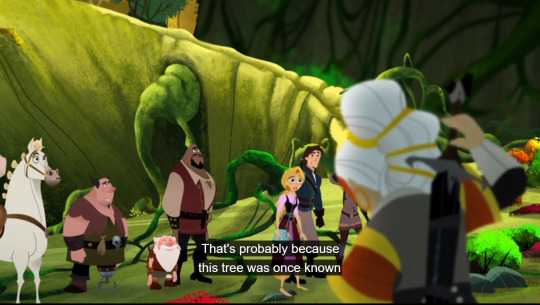

Adira launches into this story about Zhan Tiri, Demanitus, and the Great Tree and literally none of it actually matters. It’s never brought up again after this episode. We never get any insight into why they were fighting, how Zhan Tiri corrupted a tree, what significance the tree has outside of being really big and holding some scrolls, nor how the scrolls got there, why the tree is still connect to Zhan Tiri hundreds of years later, nor how Demanitus magic spear works or what it even does exactly.
Don’t introduce lore and then don't have it mean anything.
Why Do you Care, Cass?
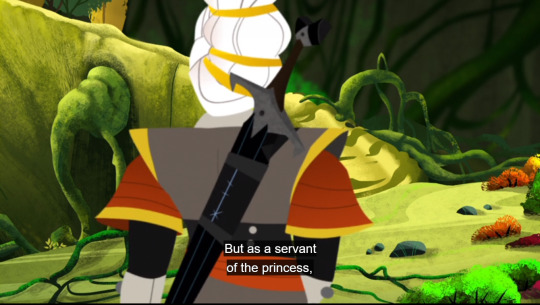
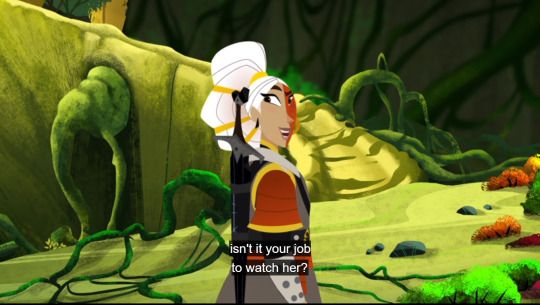


Cassandra isn’t a lady-in-waiting anymore. We’ve already established that back in Secret of the Sun Drop and in Beyond the Corona Walls. So why should she care if Adira calls her one? Adira isn’t from Corona. Adira isn’t in charge of anything. Cassandra doesn’t even like her, so Adira’s opinion shouldn’t matter.
This whole season we’ve seen Cass treat Adira like shit, but apparently we’re supposed to feel sorry for her when she can’t take clap back for all the grief she’s given. Is she really so immature that she can’t just ignore a petty insult for what it is? Why does she have to behave so insecure that she will jeopardize the mission or someone’s life over it? This is the deuteragonist I’m suppose to root for and relate to? I mean she’s twenty three for goodness sake! Grow the hell up woman!
Also while we on the subject, a royal guard and a lady-in-waiting are both servants. There’s no distinction between the two beyond what duties they perform, and that would be the case regardless of what job Cass had. Rapunzel’s a princess, everyone is her servant. That’s how the class system works, and by all means Cassandra enjoys more privilege than most people in Corona. She’s the Captain’s daughter, was granted next in line for that position in SotSD, and lady-in-waiting means to the princess means she’s above all the other maids except for Crowley and Friedberg. Cass may hate her job, but she hasn’t room to complain when Faith is right there and has things much worse.
In short making Cass suddenly indignant over being treated as lower class when she didn’t give a crap about the likes of Attila, Caine, Varian, Eugene, Lance, ect... just makes her look like a hypocrite.
The Other Reason to Dislike Lance’s Crush is That It Hinders His Development


Lance’s arc is that he’s suppose to learn to be more responsible. This episode in particular is suppose address his habit of lying... only it doesn’t. We get no real resolvement on this point. We also never see Lance progress enough to give up on Adira and stop pursuing her even when it’s directly pointed out to him that she doesn’t reciprocate his feelings. So in the end he still remains immature and irresponsible.
Though this conversation just proves that Eugene and Lance still have the healthiest relationship in the show. They’re about to disagree or call each other’s bullshit without resorting to insults or getting violent, which is more than what any relationship involving Cass does.
Questions With No Answers




We never learn why these scrolls are here, why they have the incantations on them and upon the wall, we don’t know who translated them, nor who came up with the incantations in the first place.
This is all important info that he series glosses over, because unlike the moonstone and sundrop, the incantations are things that someone had to have made at some point, and they could only have made them by studying what our plot macguffins are and how they work. Since the incantations are things that are also sought after by the big bad along with the magical objects, then we need to know how the big bad knows about them when no one else does. How they came about.
Which is yet another reason why we needed a magic system in place.
This Song is Catchy, But It Doesn’t Need To Exist
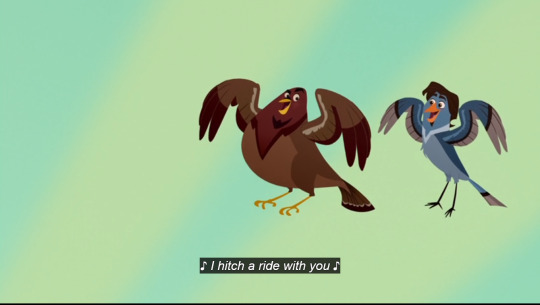
In a musical a song needs to either establish the plot, build the world, or further the characters. This song does none of those things, it’s not needed for Lance and Eugene’s relationship, it doesn’t actually resolve Lance’s plot as he is high when he apologizes for lying, and it wasn’t needed to established the man eating plant. I honestly think this song only exists so that the animators could just reuse assets they built to save on money.
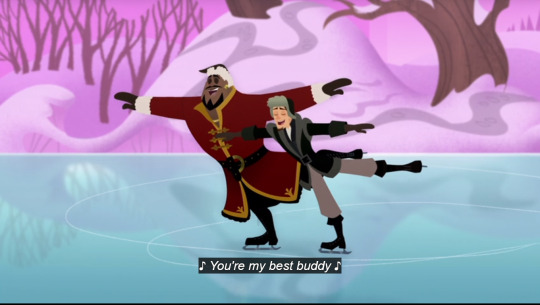
The Hurt Incantation Is the Coolest Thing In the Show! Shame It’s Not Utilized Well

People are suckered into this show by one of three things usually, ‘Let Me Make You Proud Reprise’, ‘Ready As I’ll Ever Be’, or this scene.
It’s shocking, powerfull, and a really, really awesome concept. It’s one of the best scenes in the show, and an interesting idea that offers up a lot of story possibilities.
Possibilities that’ll never actually be explored on screen. The hurt incantation isn’t useless, it does affect the plot, but it’s not used effectively. There was so much you could have done with this but it’s then never explored. Characters outright forget its existence even when they have no reason to, or it’s used to do things that should have been accomplished in other ways. It’s also never fully explained or expanded upon. They couldn’t even bother to give it more than one verse.
All of the incantations are mishandled in this show, but the hurt incantation is the one that has the biggest let down.
Conclusion
So that ends part 1, join me tomorrow for part 2.
#tangled#tangled the series#rapunzel's tangled adventure#anti-tangled#anti-cassandra#hector#the brotherhood#lance#adira
70 notes
·
View notes
Text
4 WAYS TO IDENTIFY A SACRED SIGN
4 Ways to Identify a Sacred Sign
SOURCE THIS ARTICLE WAS WRITTEN BY SHERRIE DILLARD POSTED UNDER SELF-HELP
FOUND IN ,THE LLEWELLYN JOURNAL.COM
Have you ever wondered if that coin on your path or the butterfly on the ledge outside your window is a sign? It feels like it may be, and a little inner voice tells you it is, but how can you be sure?
It used to be that noticing sacred signs and synchronicities was commonplace. Prior to the seventeenth century, signs played a vital role in our dialogue with unseen forces.
Collective and individual choices and decisions were often made by noticing such phenomena as the flight path of birds, shooting stars, or the sudden sighting of a particular animal.
Although different cultures looked to varying forms of phenomena and natural occurrences for guidance, there was a global acceptance of the importance of signs and synchronicities.
Eventually we turned to scientific inquiry to provide information and answers, and over time our reliance on receiving guidance and direction through naturally occurring sacred signs greatly diminished.
However, the unseen still communicates in this way, and, with a little awareness, we can regain our trust and ability to communicate with divine presence, angels, loved ones in spirit, and other spirit beings.
Our reasons for seeking sacred signs and synchronicities (or meaningful coincidences) are similar to what they were hundreds of years ago.
Many look to signs for guidance, comfort, for insight before making a decision, to feel the presence of a loved one on the other side, and to feel their interconnectedness with a greater divine power and love.
Although we no longer have the intimate connection with the natural world that we once had, signs still manifest through animals, birds, and nature.
However, divine presence and the spirit realm also expresses itself through present day objects, events, and things.
Where once we may have gained insight through the markings on a tree branch, we might now receive guidance through noticing the recurring numbers on a car's license plate or through a series of roadside signs.
Sacred signs and synchronicities speak to our intuitive nature and frequently bypass logic and reason.
When we first encounter one, we often experience a sense of elation, insight, or clear guidance or direction. Unfortunately, the intuitive gut awareness that confirms their presence may be short lived.
One we begin to overthink their validity, we all too often dismiss signs for lack of concrete evidence.
If you find yourself debating and wondering if you have encountered a sacred sign or synchronicity, here are four common, tell-tale characteristics and attributes that can confirm their identity.
Get Your Attention.
When looking out the window or driving down the street, has something mundane or commonplace, like a bird in flight or a construction site, ever captured your attention?
You felt drawn to it and noticed its detail, and have the odd sense that it is a sign that has something to tell you.
The feeling or connection that you experience when looking at this particular object, event, or natural being is significant in a way that you cannot explain.
When this happens the thinking voice in your head may try to persuade you to ignore the nonsensical feelings and get back to the important business of being logical.
However, this is a powerful moment. If you can trust your inner feeling of connection, even when it does not make sense, the door to a very communicative universe opens.
Your capacity to receive higher guidance and insight increases and your ability to decipher and understand what you receive strengthens.
Quite often, the magic of sacred signs and synchronicities begins when the undefinable and non-logical spark of awareness gets your attention. If something feels like it might be a sign, trust that it is.
Repetition or Patterns.
One of the most common ways that sacred signs and synchronicities emerge is through repetition, perhaps the most familiar of which is the re-occurrence of numbers.
Seeing repeating numerals, like ones or twos, or a particular number pattern (such as 121 or 7788) are significant.
In the same way, noticing a specific species of bird or animal, such as spotting a fox or wild turkey more than once within a short span of time, or continually encountering only green or red lights while driving, are sign indicators.
Signs and synchronicities might also emerge through the repetition of ideas, thoughts, or experiences.
For instance, I recently gave a reading to a woman who wanted to know why she was not able to feel the presence of her mother who had passed over a few years prior.
Distraught by her inability to know if and when her mother was with her, my client asked her mother to send her a sign.
"Your mom keeps showing me the color pink, pink flowers, pink curtains, pink clothing, anything pink. She says that this is her sign."
"Oh, thats interesting," my client said. "Pink was her favorite color. Almost every room in her house was some variation pink.
Sometimes I see flashes of pink light.
I thought maybe I was imagining it. Now that I think of it, I parked in a different spot at work yesterday and when I got out of the car the walkway was lined with pink geraniums."
If you miss a sign, don't worry, another one will appear.
The spirit realm is industrious and ceaselessly devoted; they will repeat signs over and over in an attempt to get your attention.
As long as you are open and receptive, angels, spirit beings, loved ones on the other side, and the divine presence will not give up.
Physical Sensations.
Your body can alert you and be an expert indicator of the presence of a sacred sign or synchroncity.
Some experience the sensation of their heart opening or feel warm soothing energy spread through their body when they encounter a sign.
Shivers of energy running up your spine, the hair on your arms standing up, or a fluttering sensation in your gut or solar plexus are a few other somatic signals.
If you experience any of these, pay attention; you may knowingly or unknowingly be in the presence of a sign or synchronicity.
Usually we experience these sensations when we become aware of a sign. However, they might also occur as a signal to be alert to an impending sign.
For instance, while riding the subway to work one morning, my client Tabby, told me that the hair on her arms and the back of her neck suddenly stood up, sending tingles through her entire body.
A moment later as the doors opened at her stop, she noticed an advertisement on the wall in front of her that said, "The Time is Now."
She instantly felt that this was a message meant for her. For several weeks she had been going back and forth in her mind debating whether or not to apply for a different position with her present employer.
After seeing this sign, she decided to talk to her supervisor as soon as she got to her office.
Timing.
The spirit realm seeks to respond to our requests and needs. When we are in the midst of a challenge, grieving or uncertain and feeling alone, we may turn to a loved one in spirit, an angel, or the divine presence for answers, guidance, comfort, or assurance.
Unfortunately, the emotions and stress that we are experiencing may make it difficult to access the clear intuitive guidance and connection that we would like.
It is often during challenging or significant times that sacred signs and synchronicities appear.
For instance, maybe you are concerned about a health condition and you wish that your mother or father who is on the other side was present to help you.
Soon after, you unexpectedly hear the name of a particular health care practitioner from more than one source or while scanning social media you come upon a post from someone who has a similar health issue recommending an informative health related book that help him or her.
If you find yourself wondering if something is a sacred sign or synchroncity, take a moment to contemplate what is currently going on in your life.
Are you unsure about a choice you need to make?
Have you recently made a decision and now you wonder if you did the right thing?
Do you miss a loved one who passed over? Have you been feeling lonely or on your own?
A common characteristic of sacred signs and synchronicities is that they are timely.
In addition to surfacing when we ask for one or when we are in need, they may also occur at the beginning or end of a project, relationship, or enterprise.
They can warn us of a present or upcoming condition or alert us to a positive opportunity.
Encouraging us to pursue a dream or idea or congratulating us on a recent accomplishment, signs let us know that we are being watched over.
The spirit realm loves to communicate through sacred signs and synchronicity.
The more you notice signs, listen to them, and act on them, the stronger and more prevalent they become.
ABOUT, Sherrie Dillard Psychic since childhood, Sherrie Dillard has been a professional intuitive, medium, medical intuitive and teacher for over thirty years. Among her international clientele are spiritual leaders, celebrities and business executives.
REPOSTED BY, PHYNXRIZNG
2 notes
·
View notes
Text
Fraudulent Conveyance
A fraudulent conveyance is a civil (not a criminal) matter wherein assets are transferred with the intent to hinder or delay creditors. Whereas it is ideal put an asset protection plan��into place before trouble arises, in reality, many people do not realize the need until it is too late. So, prepare for a lawsuit before it strikes if you can. However, if it is too late and you have not yet done so, don’t worry. There are ways to protect yourself after the fact.
Put Up a Fight
Fraudulent conveyance is also known as fraudulent transfer. Some people think that you find yourself dealing with a creditor, it’s over. They think that there is not a whole lot they can do to move assets protect them. Not true. If you can put up a fight, why not do it?
Strategies
There are a few strategies that you can employ late in the game. For example, offshore asset protection trusts take the assets outside of the local court’s jurisdiction. So even if your opponent jumps up and down and screams “fraudulent transfer,” your offshore trustee can lace his hands behind his head, lean back in his chair and look out at the palm trees wafting in the sea breeze. The reason is that your local courts do not have jurisdiction in his country.
youtube
The judge may tell you to ask the trustee to send trust funds to your legal opponent. If you make that request against your will, your trustee will support your true desires. They will invoke the duress clause and refuse to comply. You have done your part in doing what the judge has ordered. You asked the trustee to bring back the funds. The key is to make sure your trust is properly established. If it is, a judge would be hard-pressed to find you in contempt. That is because you are not refusing to comply. You simply do not have the ability to act firsthand.
Huge Barrier for Your Opponent
This leaves your opponent a very expensive and time-consuming option: To file a lawsuit offshore. Even if he does, he will find himself in an obstacle course. One that is built intentionally to make it unlikely for him to win. A pride of lions most often eat the weakest members of the herd. So, why let yourself be easy prey? Why not be the one that puts up the biggest fight?
Fraudulent Conveyance Vs. Preparation
This is not to say that you should engage in fraudulent conveyance. It is best that you do not. It is much better for you prepare for the near inevitable. That is, set up an asset protection plan before you need it. So, this seemingly obstinate dialogue intends to give an editorial angle on the subject. It is not encouraging you to participate in this practice. It is simply saying that those who have the philosophy “I’m not going down without a fight,” put the odds in their favor over those who easily cave in.
Free Initial Consultation with an Asset Protection Lawyer
It’s not a matter of if, it’s a matter of when. Legal problems come to everyone. Whether it’s your son who gets in a car wreck, your uncle who loses his job and needs to file for bankruptcy, your sister’s brother who’s getting divorced, or a grandparent that passes away without a will -all of us have legal issues and questions that arise. So when you have a law question, call Ascent Law for your free consultation (801) 676-5506. We want to help you.
Ascent Law LLC8833 S. Redwood Road, Suite CWest Jordan, Utah 84088 United StatesTelephone: (801) 676-5506
Ascent Law LLC
4.9 stars – based on 67 reviews
Recent Posts
Utah Real Estate Lawyers
Waiting Period for Divorce
Business Lawyers
Estate Planning Lawyer
Insurance in Divorce
Hidden Assets in Divorce
from Michael Anderson http://www.ascentlawfirm.com/fraudulent-conveyance/
from Divorce Attorney Salt Lake City http://ift.tt/2obyG4a
0 notes
Text
Fraudulent Conveyance
A fraudulent conveyance is a civil (not a criminal) matter wherein assets are transferred with the intent to hinder or delay creditors. Whereas it is ideal put an asset protection plan into place before trouble arises, in reality, many people do not realize the need until it is too late. So, prepare for a lawsuit before it strikes if you can. However, if it is too late and you have not yet done so, don’t worry. There are ways to protect yourself after the fact.
Put Up a Fight
Fraudulent conveyance is also known as fraudulent transfer. Some people think that you find yourself dealing with a creditor, it’s over. They think that there is not a whole lot they can do to move assets protect them. Not true. If you can put up a fight, why not do it?
Strategies
There are a few strategies that you can employ late in the game. For example, offshore asset protection trusts take the assets outside of the local court’s jurisdiction. So even if your opponent jumps up and down and screams “fraudulent transfer,” your offshore trustee can lace his hands behind his head, lean back in his chair and look out at the palm trees wafting in the sea breeze. The reason is that your local courts do not have jurisdiction in his country.
youtube
The judge may tell you to ask the trustee to send trust funds to your legal opponent. If you make that request against your will, your trustee will support your true desires. They will invoke the duress clause and refuse to comply. You have done your part in doing what the judge has ordered. You asked the trustee to bring back the funds. The key is to make sure your trust is properly established. If it is, a judge would be hard-pressed to find you in contempt. That is because you are not refusing to comply. You simply do not have the ability to act firsthand.
Huge Barrier for Your Opponent
This leaves your opponent a very expensive and time-consuming option: To file a lawsuit offshore. Even if he does, he will find himself in an obstacle course. One that is built intentionally to make it unlikely for him to win. A pride of lions most often eat the weakest members of the herd. So, why let yourself be easy prey? Why not be the one that puts up the biggest fight?
Fraudulent Conveyance Vs. Preparation
This is not to say that you should engage in fraudulent conveyance. It is best that you do not. It is much better for you prepare for the near inevitable. That is, set up an asset protection plan before you need it. So, this seemingly obstinate dialogue intends to give an editorial angle on the subject. It is not encouraging you to participate in this practice. It is simply saying that those who have the philosophy “I’m not going down without a fight,” put the odds in their favor over those who easily cave in.
Free Initial Consultation with an Asset Protection Lawyer
It’s not a matter of if, it’s a matter of when. Legal problems come to everyone. Whether it’s your son who gets in a car wreck, your uncle who loses his job and needs to file for bankruptcy, your sister’s brother who’s getting divorced, or a grandparent that passes away without a will -all of us have legal issues and questions that arise. So when you have a law question, call Ascent Law for your free consultation (801) 676-5506. We want to help you.
Ascent Law LLC8833 S. Redwood Road, Suite CWest Jordan, Utah 84088 United StatesTelephone: (801) 676-5506
Ascent Law LLC
4.9 stars – based on 67 reviews
Recent Posts
Utah Real Estate Lawyers
Waiting Period for Divorce
Business Lawyers
Estate Planning Lawyer
Insurance in Divorce
Hidden Assets in Divorce
from Michael Anderson http://www.ascentlawfirm.com/fraudulent-conveyance/
from Top Rated Utah Lawyer https://topratedlawyer.wordpress.com/2018/02/15/fraudulent-conveyance/
0 notes